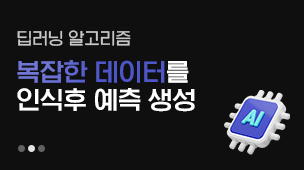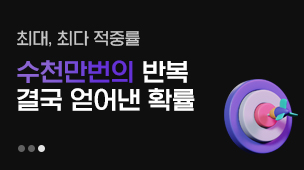Guide To Titration Meaning ADHD: The Intermediate Guide The Steps To T…
페이지 정보

본문
Titrating Medication For adhd titration
 The process of transferring medication to treat ADHD is a lengthy process. However, it is a vital part of finding the appropriate dosage for each individual. The proper dosage has less to have to do with weight or height than other factors like history with stimulant medications, comorbidities and the severity of symptoms.
The process of transferring medication to treat ADHD is a lengthy process. However, it is a vital part of finding the appropriate dosage for each individual. The proper dosage has less to have to do with weight or height than other factors like history with stimulant medications, comorbidities and the severity of symptoms.
Medicines
There are many drugs that treat ADHD. Most medications work by increasing certain brain chemicals that regulate your behaviour (called neurotransmitters). Your doctor will assist you to determine which medication is the best for you, and the ideal dose and schedule. It could take a while to determine the best combination of medications, so it is important to be patient.
The most common type of medication used to treat ADHD is called a stimulant. These medications increase the levels of dopamine and norepinephrine within the brain, which helps increase attention span and reduces the level of impulsivity. Examples of stimulants include methylphenidate (Vyvanse, Adderall), dextroamphetamine (Dexamethasone, Adderall), and atomoxetine (Strattera).
Your doctor could also prescribe a nonstimulant medication to treat your ADHD. These medications aren't as fast in their effects as stimulants, however they can increase your ability to focus and pay attention. Clonidine (Kapvay) and Intuniv (Guanfacine) and Viloxazine are all nonstimulant medicines. These drugs alter a different chemical within the brain than dopamine, and they can help calm your mood and increase your control over impulses.
Stimulant medications can cause side effects that range from mild to severe. Keep track of any side effects so that your doctor can adjust dosages or switch medications when needed. Talk to your doctor if you or your child suffer severe side effects that are intolerable.
During the process of titration, your doctor will carefully monitor your symptoms and adverse effects to determine the most effective dosage for you. They usually begin you on a lower dose and gradually increase it until you find your target dosage. This will allow them to find the medication that has the greatest effect and with the most minimal amount of adverse effects.
Once they've found a suitable dosage, your doctor will probably establish regular sessions for clinical monitoring. These appointments are typically scheduled every month at the beginning of treatment and thereafter every three to four weeks thereafter. This ensures that your medication is effective and well-tolerated. During these visits, your doctor will assess the progress and symptoms of your condition, look for any comorbidities and adjust the dosage and schedule if needed.
Dosage
Stimulant medicines are absorbed quickly and do not require accumulate in the system to achieve maximum effectiveness. Nonstimulant drugs, on the contrary may take up to up to six weeks before they reach full effect. In this time, doctors will use titration to determine the appropriate dosage for each patient. This method takes into account the patient's age, underlying health conditions and body weight, immune, allergies, and more. The dosage of each medication is also adjusted based on the patient's other medications, like SSRIs (anantidepressant) and other over-the-counter medications that cause drowsiness or interact with stimulants.
It is essential to test all drugs, including nonstimulant medications however it is especially important for ADHD medications. These medications affect norepinephrine as well as dopamine, which are responsible for executive and organizational functions in the prefrontal cortex of the brain. The dosage of medication is gradually increased over days, weeks, or even months to determine the "zone of maximum benefit" for the patient. This is the point where symptoms are managed without overstimulation or side effects.
During the process of titration, patients will visit their doctor every week to discuss how the medication is working and what possible side effects could be. They'll also schedule monthly visits to the doctor to review their overall health and symptoms improvement and make adjustments to their medication as required. The doctor may prescribe a different medication or change the dosage if the original medication isn't working or has caused too many adverse effects.
Other long-term drugs like heart medicine and antibiotics, use the titration technique. Patients should be careful when titrating long-acting stimulants, such as SSRIs as they may cause serious adverse effects if they take too much or if their dosage is not controlled.
It is highly recommended that patients adhere to the self-titration guidelines provided by their doctor. Patients should only self-titrate long-acting ADHD medication, and not anxiety or depression medications. This will prevent confusion between doctors, which may happen if a patient visits multiple doctors before settling into their "zone." It is crucial for patients to track and log mild side effects to discuss at upcoming visits with their doctor.
Side effects
It is essential to know the adverse effects that come with the ADHD medication. Your doctor will inform you about these issues and could alter the dosage to prevent unwanted side effects like stomach upsets, insomnia headaches, jitters, or stomach upsets. The side effects of medications are often long-lasting and must be monitored.
The medications used to treat ADHD are effective by altering the ways your brain processes certain neurotransmitters. They can boost the levels of these chemicals, which enhance your ability to focus, control impulses, and resist distractions. They can also reduce hyperactivity and impulsivity. There are a myriad of medications that can be used to treat ADHD which include stimulants, non-stimulants and melatonin. Stimulants are the most commonly used drugs, however they can trigger serious side effects that require medical attention. Non-stimulants that aid in concentration and attention are generally safer. However, they may cause side effects like drowsiness or a dry mouth.
Titration is important, especially for long-acting stimulants which are taken daily and last six to eight hours. Certain patients may need to take an immediate-release dose in the afternoon or evening to maintain their performance after the first dose has gone off.
Titration can also be used for medicines that have to be taken over a lengthy time period, such as blood pressure medication and antidepressants. It assists in determining the right dose for these medications, which can take months to attain a therapeutic level. Titration can also be used to determine the proper dosage for a combination medication like stimulant and psychosocial treatments.
The titration process can be difficult, especially for older adults who are used to taking lower doses of stimulant medications. The slow private titration adhd process helps prevent overdosing and keeps patients on doses that are inadequate for those who are sensitive to doses that are low (such slow metabolizers). It can also aid in detecting medication interactions, such as when a patient is taking drugs that inhibit CYP2D6 -a drug metabolism enzyme (eg paroxetine, atorvastatin and atorvastatin) with atomoxetine.
Schedule
When titrating a medication doctors will usually start with a lower dose, and gradually increase it. They will be in contact with the patient frequently and make adjustments as needed. This can take a while and requires the creativity of the doctor to find the perfect balance.
The aim is to reach the "target dose" that can provide therapeutic benefits with minimal adverse effects. This is usually done with stimulants, however it can be utilized for other medications too. Down-Titration meaning Adhd, also referred to as titration, is sometimes employed to lower the dosage of a drug. This can help to manage the adverse side effects of certain drugs or to reduce the risk of withdrawal symptoms when the medication is discontinued.
If you or your child are taking adhd titration uk medication, it's crucial to keep an eye on them and let the doctors know how they're reacting. This way, the medication can be adjusted to achieve the best results. It might take a while, but the effort is worth it. In addition, it is crucial to ask questions and be aware of the titration process.
 The process of transferring medication to treat ADHD is a lengthy process. However, it is a vital part of finding the appropriate dosage for each individual. The proper dosage has less to have to do with weight or height than other factors like history with stimulant medications, comorbidities and the severity of symptoms.
The process of transferring medication to treat ADHD is a lengthy process. However, it is a vital part of finding the appropriate dosage for each individual. The proper dosage has less to have to do with weight or height than other factors like history with stimulant medications, comorbidities and the severity of symptoms.Medicines
There are many drugs that treat ADHD. Most medications work by increasing certain brain chemicals that regulate your behaviour (called neurotransmitters). Your doctor will assist you to determine which medication is the best for you, and the ideal dose and schedule. It could take a while to determine the best combination of medications, so it is important to be patient.
The most common type of medication used to treat ADHD is called a stimulant. These medications increase the levels of dopamine and norepinephrine within the brain, which helps increase attention span and reduces the level of impulsivity. Examples of stimulants include methylphenidate (Vyvanse, Adderall), dextroamphetamine (Dexamethasone, Adderall), and atomoxetine (Strattera).
Your doctor could also prescribe a nonstimulant medication to treat your ADHD. These medications aren't as fast in their effects as stimulants, however they can increase your ability to focus and pay attention. Clonidine (Kapvay) and Intuniv (Guanfacine) and Viloxazine are all nonstimulant medicines. These drugs alter a different chemical within the brain than dopamine, and they can help calm your mood and increase your control over impulses.
Stimulant medications can cause side effects that range from mild to severe. Keep track of any side effects so that your doctor can adjust dosages or switch medications when needed. Talk to your doctor if you or your child suffer severe side effects that are intolerable.
During the process of titration, your doctor will carefully monitor your symptoms and adverse effects to determine the most effective dosage for you. They usually begin you on a lower dose and gradually increase it until you find your target dosage. This will allow them to find the medication that has the greatest effect and with the most minimal amount of adverse effects.
Once they've found a suitable dosage, your doctor will probably establish regular sessions for clinical monitoring. These appointments are typically scheduled every month at the beginning of treatment and thereafter every three to four weeks thereafter. This ensures that your medication is effective and well-tolerated. During these visits, your doctor will assess the progress and symptoms of your condition, look for any comorbidities and adjust the dosage and schedule if needed.
Dosage
Stimulant medicines are absorbed quickly and do not require accumulate in the system to achieve maximum effectiveness. Nonstimulant drugs, on the contrary may take up to up to six weeks before they reach full effect. In this time, doctors will use titration to determine the appropriate dosage for each patient. This method takes into account the patient's age, underlying health conditions and body weight, immune, allergies, and more. The dosage of each medication is also adjusted based on the patient's other medications, like SSRIs (anantidepressant) and other over-the-counter medications that cause drowsiness or interact with stimulants.
It is essential to test all drugs, including nonstimulant medications however it is especially important for ADHD medications. These medications affect norepinephrine as well as dopamine, which are responsible for executive and organizational functions in the prefrontal cortex of the brain. The dosage of medication is gradually increased over days, weeks, or even months to determine the "zone of maximum benefit" for the patient. This is the point where symptoms are managed without overstimulation or side effects.
During the process of titration, patients will visit their doctor every week to discuss how the medication is working and what possible side effects could be. They'll also schedule monthly visits to the doctor to review their overall health and symptoms improvement and make adjustments to their medication as required. The doctor may prescribe a different medication or change the dosage if the original medication isn't working or has caused too many adverse effects.
Other long-term drugs like heart medicine and antibiotics, use the titration technique. Patients should be careful when titrating long-acting stimulants, such as SSRIs as they may cause serious adverse effects if they take too much or if their dosage is not controlled.
It is highly recommended that patients adhere to the self-titration guidelines provided by their doctor. Patients should only self-titrate long-acting ADHD medication, and not anxiety or depression medications. This will prevent confusion between doctors, which may happen if a patient visits multiple doctors before settling into their "zone." It is crucial for patients to track and log mild side effects to discuss at upcoming visits with their doctor.
Side effects
It is essential to know the adverse effects that come with the ADHD medication. Your doctor will inform you about these issues and could alter the dosage to prevent unwanted side effects like stomach upsets, insomnia headaches, jitters, or stomach upsets. The side effects of medications are often long-lasting and must be monitored.
The medications used to treat ADHD are effective by altering the ways your brain processes certain neurotransmitters. They can boost the levels of these chemicals, which enhance your ability to focus, control impulses, and resist distractions. They can also reduce hyperactivity and impulsivity. There are a myriad of medications that can be used to treat ADHD which include stimulants, non-stimulants and melatonin. Stimulants are the most commonly used drugs, however they can trigger serious side effects that require medical attention. Non-stimulants that aid in concentration and attention are generally safer. However, they may cause side effects like drowsiness or a dry mouth.
Titration is important, especially for long-acting stimulants which are taken daily and last six to eight hours. Certain patients may need to take an immediate-release dose in the afternoon or evening to maintain their performance after the first dose has gone off.
Titration can also be used for medicines that have to be taken over a lengthy time period, such as blood pressure medication and antidepressants. It assists in determining the right dose for these medications, which can take months to attain a therapeutic level. Titration can also be used to determine the proper dosage for a combination medication like stimulant and psychosocial treatments.
The titration process can be difficult, especially for older adults who are used to taking lower doses of stimulant medications. The slow private titration adhd process helps prevent overdosing and keeps patients on doses that are inadequate for those who are sensitive to doses that are low (such slow metabolizers). It can also aid in detecting medication interactions, such as when a patient is taking drugs that inhibit CYP2D6 -a drug metabolism enzyme (eg paroxetine, atorvastatin and atorvastatin) with atomoxetine.
Schedule
When titrating a medication doctors will usually start with a lower dose, and gradually increase it. They will be in contact with the patient frequently and make adjustments as needed. This can take a while and requires the creativity of the doctor to find the perfect balance.
The aim is to reach the "target dose" that can provide therapeutic benefits with minimal adverse effects. This is usually done with stimulants, however it can be utilized for other medications too. Down-Titration meaning Adhd, also referred to as titration, is sometimes employed to lower the dosage of a drug. This can help to manage the adverse side effects of certain drugs or to reduce the risk of withdrawal symptoms when the medication is discontinued.
If you or your child are taking adhd titration uk medication, it's crucial to keep an eye on them and let the doctors know how they're reacting. This way, the medication can be adjusted to achieve the best results. It might take a while, but the effort is worth it. In addition, it is crucial to ask questions and be aware of the titration process.
- 이전글Your Family Will Be Grateful For Having This Asbestos Cancer Attorney 24.10.12
- 다음글Откройте секреты чакр и Таро 24.10.12
댓글목록
등록된 댓글이 없습니다.





 스포츠토토 유용한 정보
스포츠토토 유용한 정보  가상경기 배팅게임
가상경기 배팅게임 